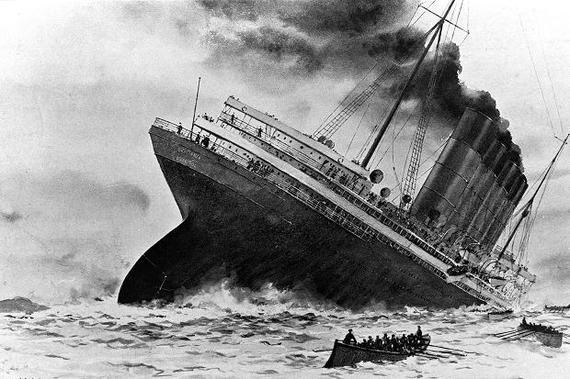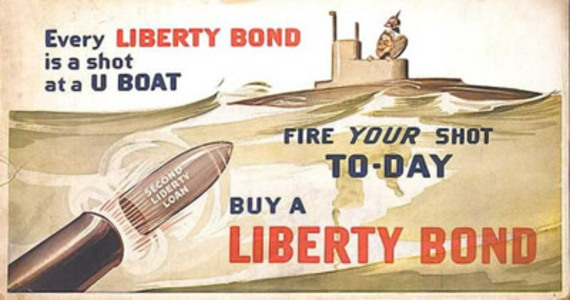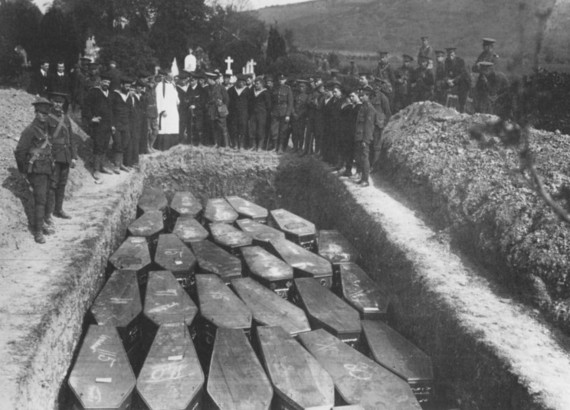The Sinking of the Lusitania
Passenger ships had continued to ply their trade between Britain and the United States since the start of the war. One such vessel was the Lusitania, which had made regular transatlantic sailings between New York and Liverpool via Queenstown in southern Ireland.
The Lusitania was, for the period, a big liner of over 30,000 tons, 787 feet in length and with a crew of 700. This floating luxury hotel, launched in 1907, was registered in Britain to the Cunard White Star line and was therefore considered a legitimate target by Germany. She had a cruising speed of 25 knots, however, which was believed to be fast enough to outrun any U-boat attack.
On May 1, 1915 the Lusitania was preparing to sail from New York. Ominously, next to the Cunard announcement of her departure in the newspapers was a warning from the German Embassy that ships flying the British flag were liable to attack. The Director of the Port of New York inspected the Lusitania for guns and declared there were none aboard.
Her 1,300 passengers included 159 Americans. Among the prominent U.S. citizens on the passenger list were Mr. and Mrs. Albert Hubbard and Albert Gwynne Vanderbilt. The liner left New York on schedule and steamed across the Atlantic.
Meanwhile, the German U-boat, U-20, under the command of Kapitanleutnant Walter Schwieger, had sailed from Germany around the north of the British Isles, heading for the south coast of Ireland off Queenstown. She had already sunk three ships and had only three torpedoes remaining.
Approaching Ireland's southern coast, the Lusitania's Captain William Turner reduced speed to 18 knots to make port at Queenstown on the high tide. Schwieger sighted and recognized the liner and, at 2:00 p.m. on May 7, U-20 fired a single torpedo at the Lusitania's starboard side. It exploded in a boiler room and the ship sank in 18 minutes. Among the 1,198 passengers and crew killed were 128 Americans, including the Hubbards and Albert Vanderbilt.
In the United States, Americans was at first astonished and shocked, and then increasingly angered at the loss of civilian lives. President Wilson attempted to maintain American neutrality, but was forced by public opinion to warn Germany that although there would be no reprisals for the sinking of the Lusitania, additional attacks would prompt an American response.
- Joseph V Micallef



